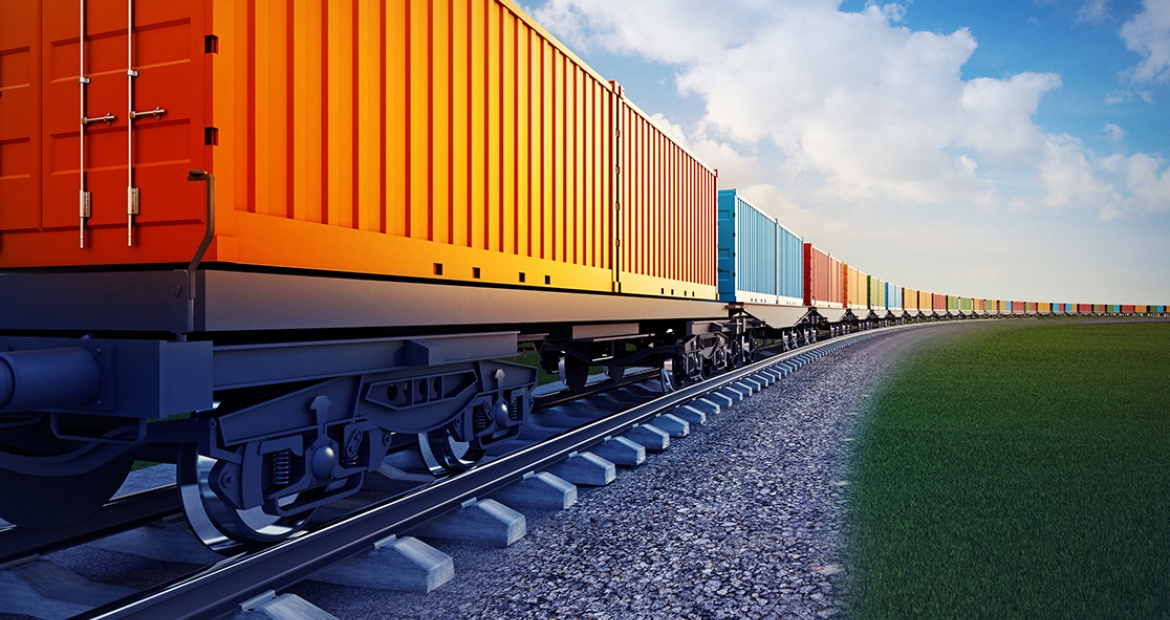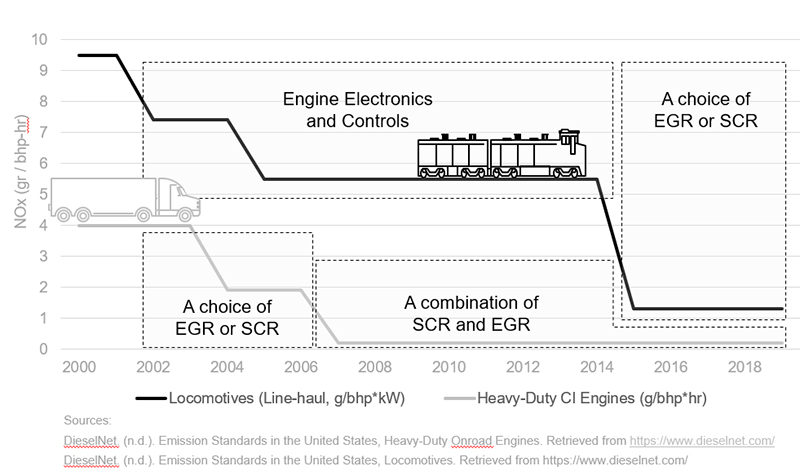SCR versus EGR: What's the right choice for the rail industry?
Today, there are two core technologies to reduce emissions within the rail industry: Selective Catalytic Reduction (SCR) and Exhaust Gas Recirculation (EGR). But how do you know which is the right technology for your customers?
By Aytek Yuksel, Content Marketing Leader - Power Systems

A quick internet search for “SCR vs. EGR” will return more than two million results from various sources, but what does it all mean? For decades, people have been debating the merits of each technology, arguing over which is better. We’d argue, however, that the question you should be asking is this: Which technology is right for your customers?
In this article, we’ll provide a clear and practical explanation for SCR and EGR technology in the rail industry.
First, a little background on the SCR vs. EGR technology debate.

Emission regulations for engines used in heavy-duty applications - from on-road vehicles to locomotives - started in the 1990s and became more stringent in the 2000s. Locomotive manufacturers were able to meet these emission regulations without the use of exhaust gas aftertreatment technologies in most applications. On the other hand, heavy-duty on-road engine manufacturers had to meet more stringent regulations compared to railway locomotives.
In the 2010s, as emission regulations got more stringent, several heavy-duty on-road engine manufacturers needed to use a combination of SCR and EGR technologies to achieve the required emission levels. For the rail industry, where most applications require the use of larger engines, several engine manufacturers had to choose between SCR or EGR to meet the new emission regulations. This was the beginning of the debate between SCR and EGR technologies.
A Better Question: What is the right emission reduction technology for your customers?
From rail operators to locomotive manufacturers, rail industry players have needs unique to their business models and markets served. Instead of making the technology choice the starting point, we have outlined three use cases and the right aftertreatment technology.
When running hours and fuel consumption makes the engine efficiency an important parameter
Challenge: As regulations require pollutant emissions deceased, engine manufacturers could adjust engine parameters to partially lower the emission of pollutants.
Combustion temperature is one of these parameters, however, a lower combustion temperature reduces NOx emission yet increases fuel consumption. For rail operators focusing on improving fleet utilization, increased fuel consumption could negatively impact their financials and worsen their environmental impact.
Opportunity: Rail operators can optimize engine combustion for higher fuel efficiency and choose to reduce NOx separately through SCR, since SCR is a solution external to the engine. Given the high proportion of fuel costs in rail operators’ overall running costs, rail operators would likely offset the additional cost of diesel exhaust fluid (DEF) over time through the fuel consumption savings.
When reliability matters, and you want to build upon an already reliable engine
Challenge: Engine manufacturers have the option to introduce varying levels of engine design changes to meet the more stringent emission regulations. For locomotive manufacturers, any extensive change in engine design raises the question of engine reliability. This concern is further amplified for engines, such as the Cummins QSK50 and QSK60, which have proven their reliability over many applications and millions of hours of usage.
Opportunity: Locomotive manufacturers could lower the risk of adversely impacting engine reliability by choosing engines that didn’t go through significant architectural design changes and new part introductions from an engineering perspective. SCR technology helps the engine meet emission regulations with limited architectural design changes in an engine’s combustion chamber.
When a high degree of commonality helps you create a financial edge through operational savings
Challenge: As emission regulations vary across regions, locomotive manufacturers and rail operators face a dual challenge: offering products that are fit for local needs, while increasing their financial performance.
Opportunity: Use of SCR technology would likely allow locomotive manufacturers to have higher commonality across variations within a given engine platform. This offers financial and operational benefits. For instance, rail operators managing a fleet with higher engine commonality will benefit from common service methodologies while managing fewer parts.
“We expect the locomotive manufacturers and rail operators using engines with SCR technology today to be better positioned in the near future when the emission regulations get more stringent. Today’s SCR technology is well suited to meet future emission regulations with less interventions, positioning users of SCR technology a step ahead of users with other emissions technologies,” says Miranda Cross, Global Rail Account Manager of Cummins Power Systems.
Bottom line, it is important to evaluate your customers’ key needs and use cases before making the technology decisions. For customers with the above three use cases, SCR offers a combination of financial and environmental benefits, including greenhouse gas reduction, while also helping locomotive manufacturers and rail operators meet unique local needs.
To learn more about trends and technologies in rail industry follow Cummins on Facebook and LinkedIn. To learn more about rail power solutions Cummins offers, visit our webpage.
Think your friends and colleagues would like this content? Share on LinkedIn and Facebook.
Author Profiles

Aytek Yuksel, Content Marketing Leader - Power Systems
Aytek is a marketing leader at Cummins, focusing on technology and thought leadership. Since joining in 2008, he has held various marketing roles and now shares insights on markets, technologies, and energy transition. Aytek lives in Minneapolis with his wife and two kids.
Related Tags